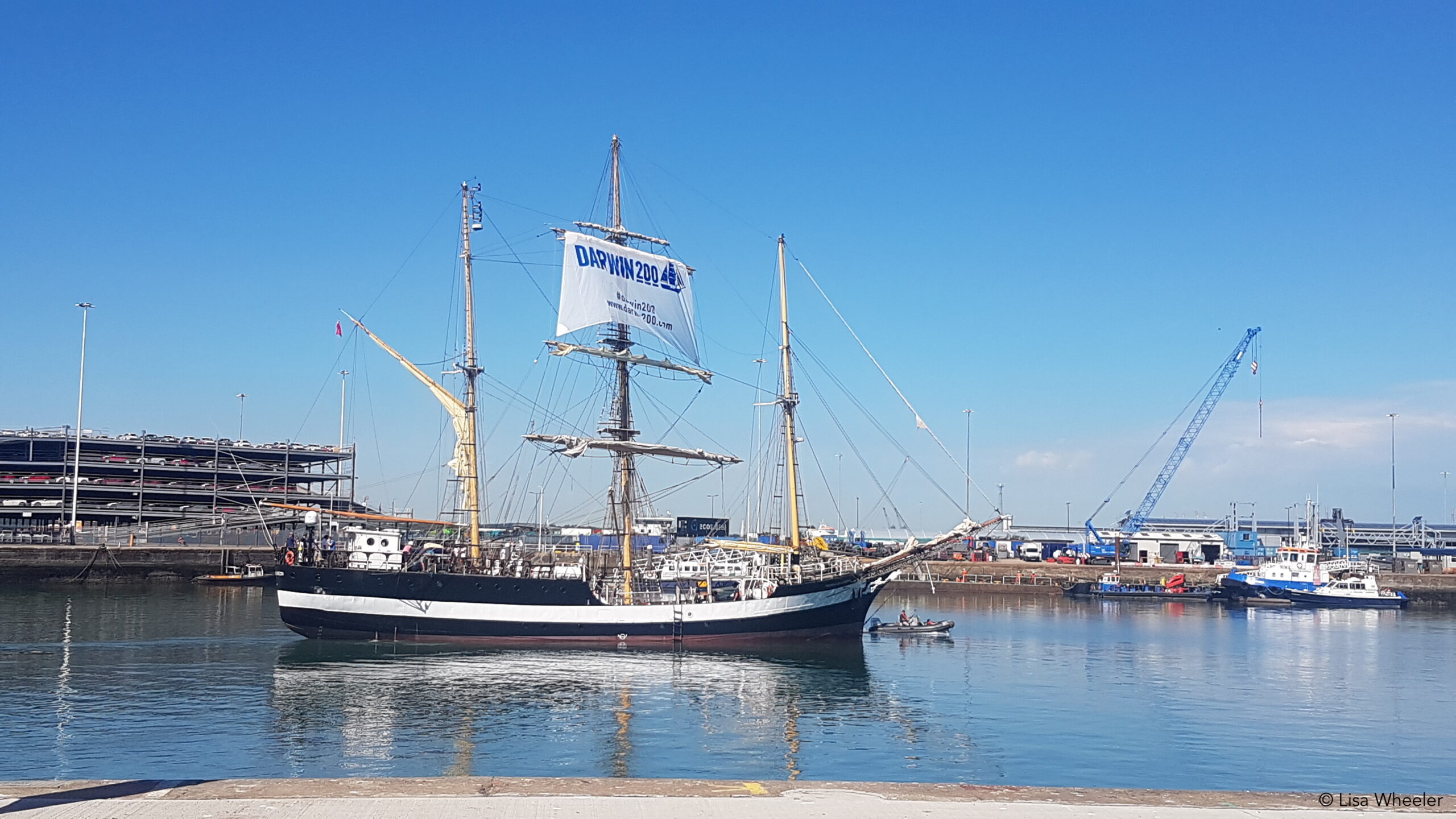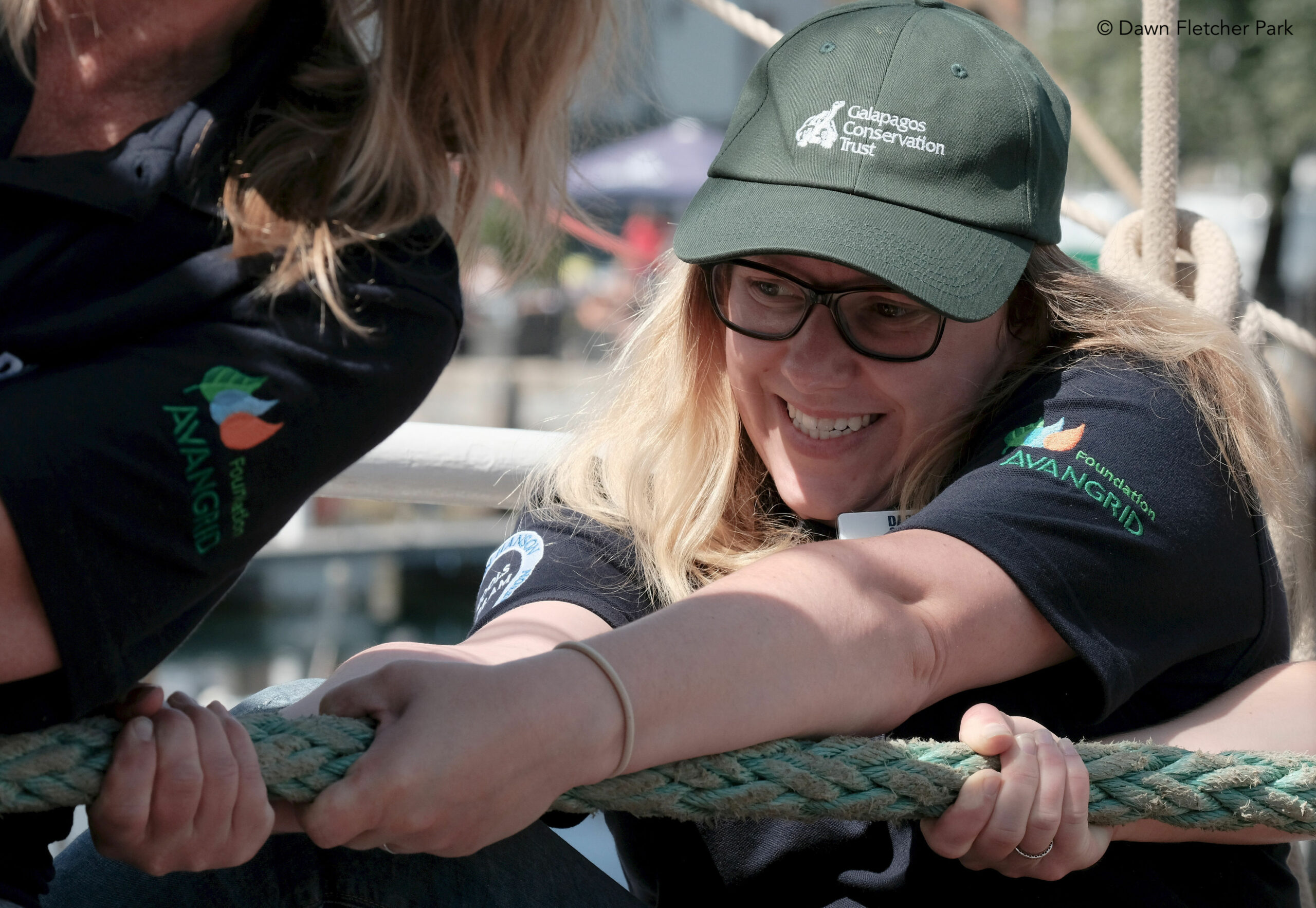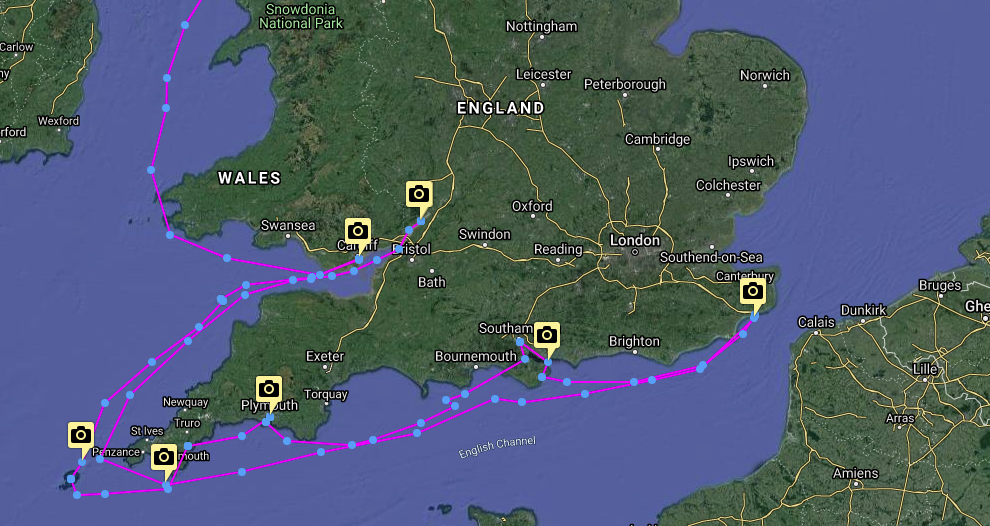
Darwin200 – UK Launch
GCT's Projects Manager, Lisa, embarked on the first leg of the Darwin200 UK launch in July 2020.
Next year, the Darwin200 team hope to follow Charles Darwin’s footsteps onboard a tall ship as they travel around the globe visiting the same 50 ports that Charles Darwin made landfall onboard HMS Beagle. In preparation for the 2021 global voyage, Darwin200 chartered tall ship Pelican of London to circumnavigate the UK, and I was lucky enough to join the crew for the first 12 days. The crew and environmental scientists onboard are mentoring a group of trainee sailors learning the ropes and young scientists learning to assess the health of the UK’s waters.

The Pelican of London © Lisa Wheeler
As Galapagos Conservation Trust’s Projects Manager, I joined the Darwin200’s voyage to build relationships with the Darwin team and to scope the science and outreach elements forming the main part of the global voyage next year. The main voyage will be stopping at Galapagos on its global journey, and we hope to partner with Darwin200 to collect data and undertake outreach as part of GCT’s Plastic Pollution Free Galapagos programme.
In preparation for the voyage, I joined 43 other crew members, including the Darwin 200 team, professional crew, trainee sailors and young scientists for two days of training in Sharpness, Gloucestershire. These training days were my first foray into the fascinating life onboard a tall ship and, most importantly, the very beginnings of how to sail one. We left Sharpness on a four-day training sail down the Bristol Channel, around Cornwall and along the south coast where we docked in Folkestone, Kent for the official launch of the 56-day voyage.

Lisa learning to sail aboard the Pelican of London © Dawn Fletcher Park
While onboard, I, along with the rest of the trainee sailors and young scientists learned the ropes, climbed aloft to put the sails in and out of their gears, took watches to spot for vessels and hazards at sea and was on the helm keeping the ship on course. From Folkestone, the ship travelled to Southampton and then Plymouth where I departed the ship. Currently, the Pelican is anchored at Rathlin Island off the north coast of Ireland before it travels around Scotland and back down the east coast of the UK, finishing in London at the end of September.

Pelican of London’s route around the South coast. Follow it online at my.yb.tl/tspelican
My trip was a memorable one. After four months of lockdown, it was strange being around so many strangers. Strict protocols were in place during the start of the journey with regular sanitisation of touchpoints, maintaining physical distancing where possible and wearing masks while inside and socialising. These measures were relaxed slightly after the onboard medic declared the ship COVID-19 free. However, these measures did not take away from being able to meet incredible people onboard, seeing the beautiful sunsets and sunrises, and the joy of taking lookout by moonlight! The clear highlight for me happened while working aloft on the lowest sail on the main mast when common dolphins came to play around the ship before swimming off into the blue, a spectacular view of these majestic creatures in UK waters.
Find out more about Darwin200 here and Charles Darwin here.

